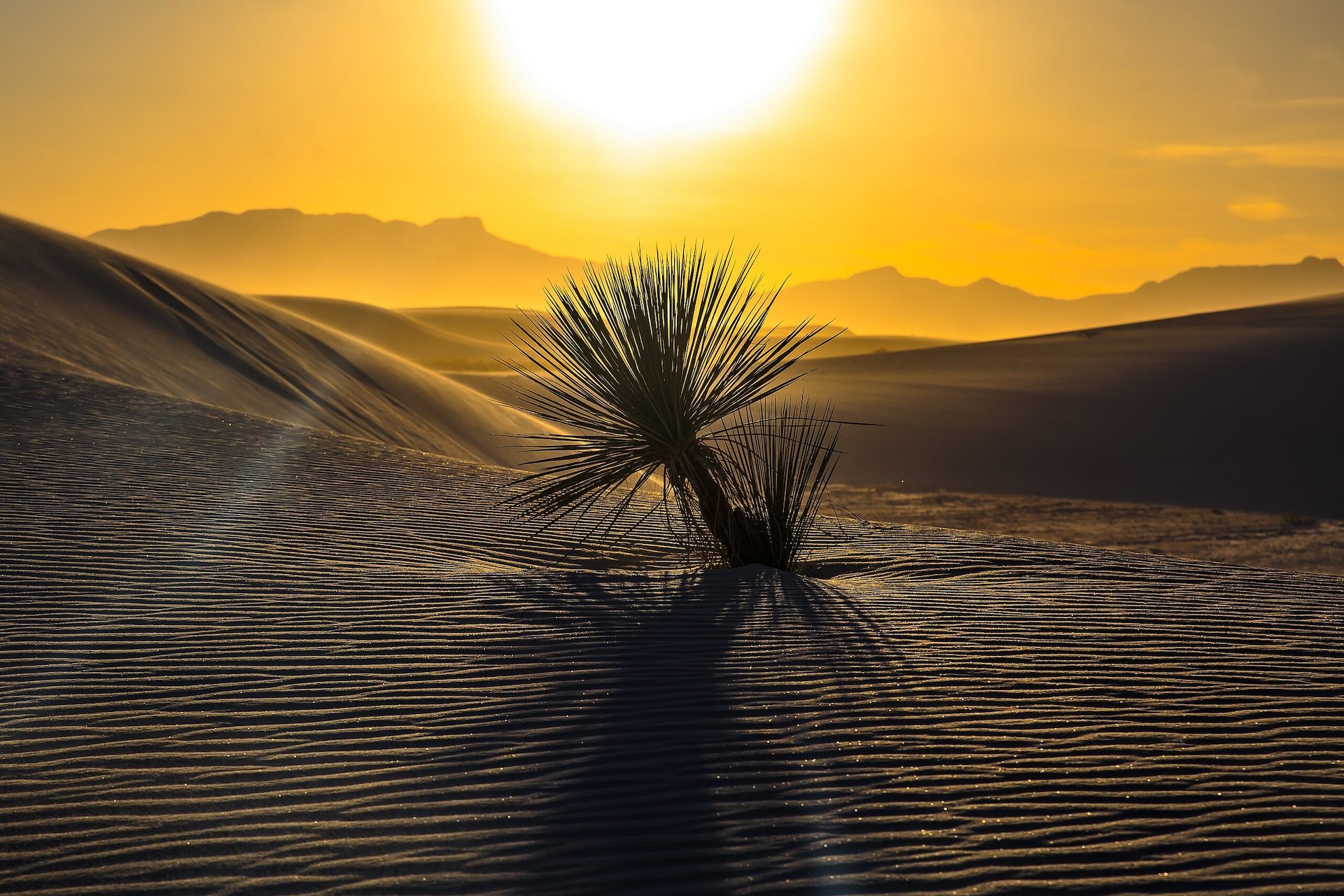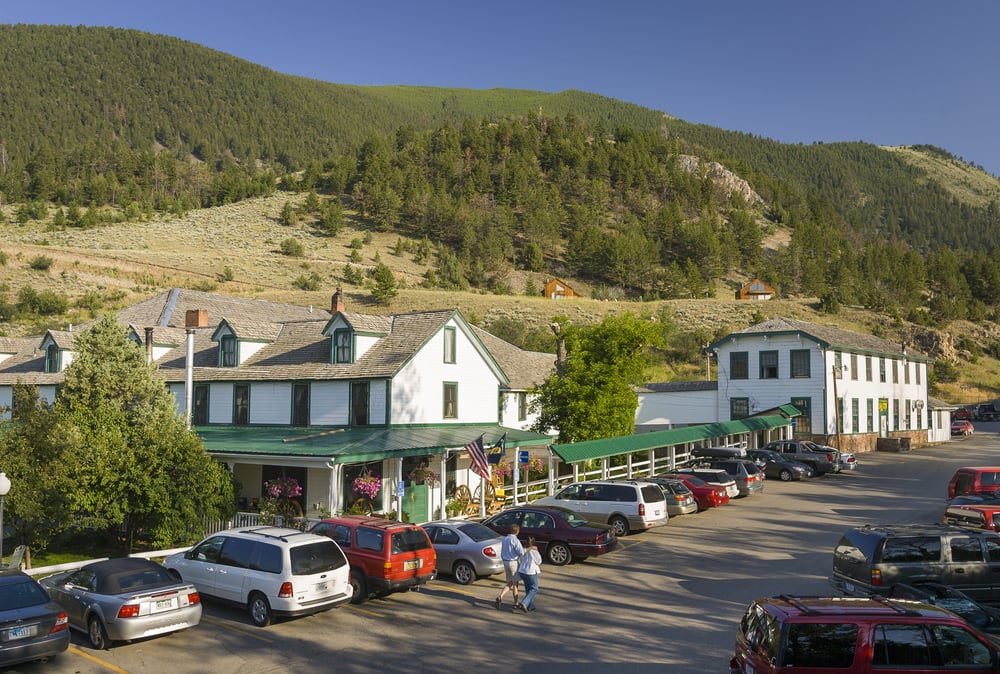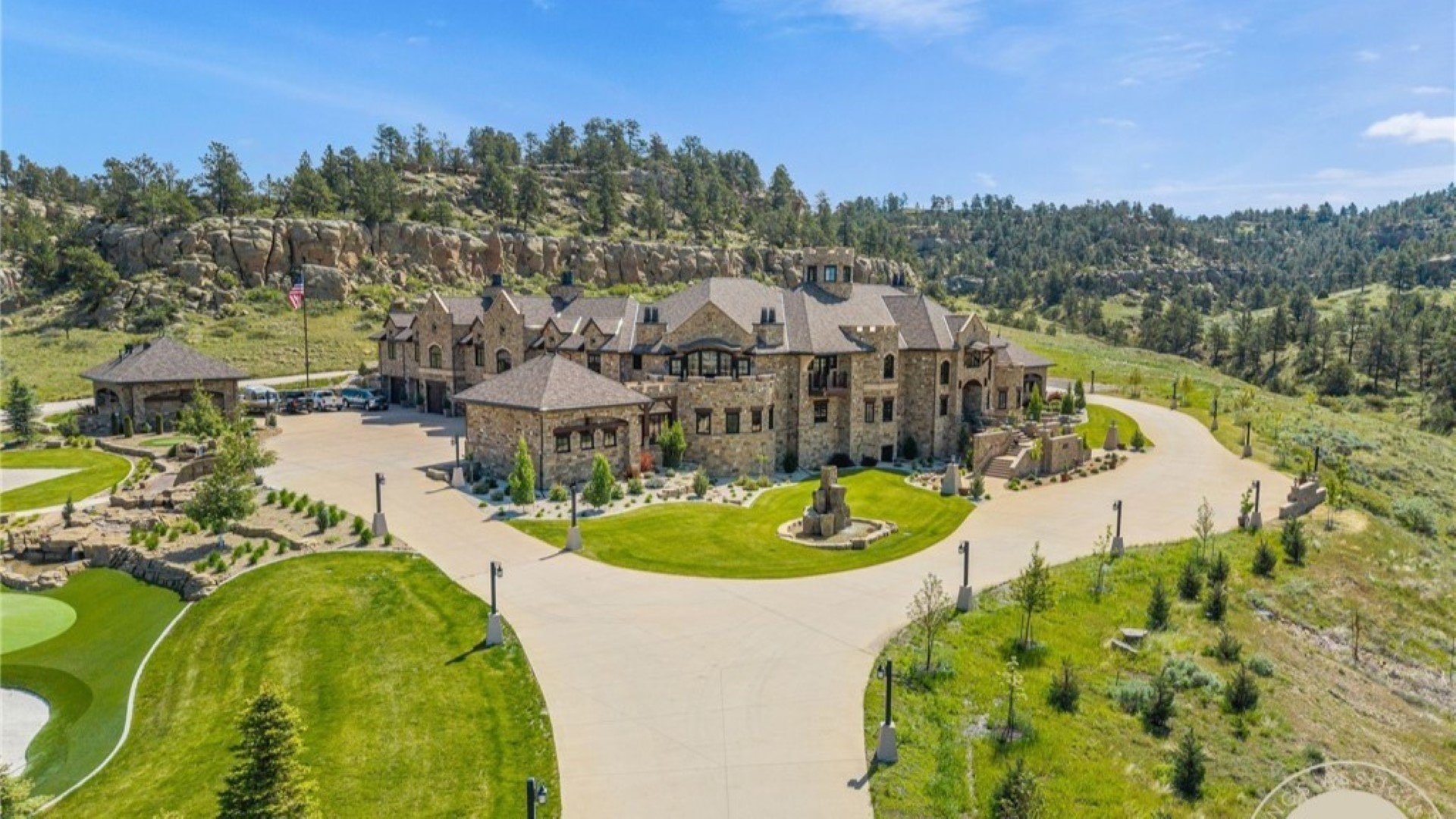
Montana doesn’t do half-measures, and neither do its towns. Out in the Big Belt Mountains, where the air smells like pine sap and snowmelt, the roads don’t just take you places—they take you back in time. Take Monarch, a one-bar, no-stoplight kind of place where the Little Belts lean in close. Or Neihart, once roaring with silver mines, now a whisper of a town where cabins sag under a hundred winters’ worth of snow. Down the road, White Sulphur Springs still bubbles with the same mineral waters that soothed 19th-century cattle barons, while Ringling—founded by a circus magnate—now barely has enough residents to fill a clown car.
These are towns where cell service is a rumor, where the coffee is hot but the news is cold, and where a stranger at the bar is a novelty worth discussing for a week. They sit tucked between ridges and rivers, held together by rust, grit, and the occasional snowplow. You don’t just stumble into these places—you have to want them. But if you do, you’ll find something rare: silence that hums, stars that shout, and a Montana that still belongs to itself.
10. Monarch: Alpine Serenity

Nestled in the heart of Montana’s mountainous terrain, Monarch is a tiny alpine community with a population of fewer than 100 residents. This quaint town offers a peaceful retreat with access to pristine forests, crystal-clear streams, and abundant wildlife. Outdoor enthusiasts can enjoy hiking, fishing, and skiing at the nearby Showdown Montana ski area, making it a year-round destination for adventure. The main industries in Monarch revolve around tourism and outdoor recreation, serving visitors who seek solace in nature’s embrace. What makes Monarch truly secluded is its remote location, surrounded by the vast expanse of the Little Belt Mountains, providing an untouched natural landscape that’s hard to find elsewhere. The town’s serene environment and close-knit community offer a glimpse into a simpler way of life, far from the hustle and bustle of city living.
Where is Monarch?

Monarch is located in Cascade County, within the shadows of the Little Belt Mountains in central Montana. Its seclusion is amplified by the rugged terrain and dense forests that envelop the area, creating a natural barrier from the outside world. To reach Monarch, travelers can take U.S. Route 89 south from Great Falls, winding through scenic mountain roads that showcase Montana’s breathtaking landscapes. The town’s remote setting, coupled with limited commercial development, makes it a hidden gem for those looking to escape and immerse themselves in nature.
9. Lincoln: Nature Lover’s Retreat

Tucked away in the heart of Montana’s wilderness, Lincoln is a small town with a population of around 1,000 people. Known for its lush forests, meandering rivers, and abundant wildlife, it’s a paradise for nature enthusiasts. Visitors and residents alike can indulge in activities such as hiking the Continental Divide Trail, fly-fishing in pristine waters, or exploring nearby ghost towns that whisper tales of the past. The main industries in Lincoln include timber, ranching, and tourism, all deeply connected to the surrounding natural environment. Lincoln’s seclusion stems from its location amidst vast stretches of unspoiled wilderness, offering a tranquil escape from the demands of modern life. The town’s serene ambiance and access to untouched landscapes make it a haven for those seeking solitude and a close connection to nature.
Where is Lincoln?

Located in Lewis and Clark County, Lincoln sits along Montana Highway 200, nestled between the Big Belt Mountains and the Bob Marshall Wilderness Complex. Its remote position, surrounded by dense forests and mountain ranges, enhances its secluded charm. To get to Lincoln, travelers journey through winding mountain roads, with the nearest significant city, Helena, approximately 60 miles to the southeast. The town’s isolation is accentuated by its natural surroundings, making it an ideal spot for those looking to get away from it all and immerse themselves in Montana’s rugged beauty.
8. Cascade: Gateway to Mountain Trails

Perched along the banks of the Missouri River, Cascade is a small town with a population of about 700 residents. This charming community offers a peaceful setting with ample opportunities for outdoor activities like hiking, fishing, and wildlife viewing. The nearby mountains and trails provide adventure seekers with pathways through picturesque landscapes, while the river offers some of the best trout fishing in the region. Cascade’s economy is primarily driven by agriculture, ranching, and tourism, reflecting its deep-rooted connection to the land. The town’s seclusion is due to its rural location and the expansive natural areas that surround it, offering a quiet retreat away from crowded urban centers. With its friendly locals and tranquil environment, Cascade embodies the essence of small-town Montana living.
Where is Cascade?

Cascade is situated in Cascade County, central Montana, along Interstate 15 between Great Falls and Helena. While easily accessible by highway, the town remains secluded due to its location amidst rolling hills and expansive ranchlands. The Big Belt Mountains lie to the east, adding to the area’s scenic beauty and opportunities for mountain exploration. To reach Cascade, travelers take I-15 and exit at the town’s entrance, where the simplicity of rural life and the grandeur of Montana’s landscapes welcome them. The town’s tucked-away feel, despite its proximity to the interstate, provides a unique balance of seclusion and accessibility.
7. Ringling: Quaint Town with Railroad Roots

Ringling is a tiny rural community with a population of just around 40 residents, steeped in history and old-world charm. Founded by John Ringling of Ringling Brothers Circus fame, the town was once a bustling railway hub in the early 20th century. Today, visitors can explore remnants of its historic past, including the old church and railway structures, soaking in the quiet ambiance of a bygone era. The main industry is ranching, with vast open lands surrounding the town, contributing to its secluded and peaceful atmosphere. Ringling’s isolation in the sweeping Montana plains, far from the noise of modern civilization, makes it a unique destination for those seeking solitude and a touch of history.
Where is Ringling?

Situated in Meagher County, Ringling lies along U.S. Route 89, south of White Sulphur Springs and north of Livingston. Nestled near the eastern foothills of the Big Belt Mountains, the town is enveloped by rolling prairies and distant mountain vistas. Ringling’s remote location and sparse population enhance its secluded nature, with limited amenities reinforcing its off-the-beaten-path appeal. Travelers can reach Ringling by driving along scenic highways that traverse some of Montana’s most breathtaking landscapes, adding to the sense of adventure in discovering this hidden gem.
6. Wolf Creek: Angler’s Secluded Paradise

Wolf Creek is a small unincorporated community with a population of approximately 500 residents, known for its serene setting and exceptional fishing opportunities. As a gateway to the Missouri River’s renowned fishing spots, it attracts anglers from all over seeking solitude and world-class trout fishing. The town offers a quiet retreat with access to outdoor activities like hiking, camping, and wildlife viewing in the surrounding mountains and forests. The main industries include tourism centered around fishing and outdoor recreation, along with some ranching. Wolf Creek’s seclusion is due to its location amidst rugged terrain and the absence of major urban development, providing a peaceful haven for nature lovers.
Where is Wolf Creek?

Wolf Creek is located in Lewis and Clark County, along Interstate 15, about 28 miles north of Helena. It’s nestled between the Big Belt Mountains to the east and the Rocky Mountains to the west, enhancing its picturesque and secluded setting. To reach Wolf Creek, travelers can take I-15 and exit onto Recreation Road, winding through scenic landscapes that epitomize Montana’s natural beauty. The town’s proximity to the Missouri River and surrounding wilderness areas contributes to its remote feel, making it an ideal destination for those looking to escape into nature.
5. Martinsdale: Art and Nature Unite

With a population of just around 50 residents, Martinsdale is a quiet community where art and nature seamlessly blend. The town is home to the Bair Family Museum, showcasing a unique collection of Western art and artifacts that offer a glimpse into Montana’s cultural heritage. Surrounded by the vastness of the Crazy and Big Belt Mountains, outdoor enthusiasts can enjoy fishing in nearby rivers, hunting, and exploring open landscapes. The main industries include ranching and tourism driven by the museum and the area’s natural attractions. Martinsdale’s seclusion lies in its remote setting amidst rolling plains and mountain backdrops, providing a serene environment far removed from urban hustle.
Where is Martinsdale?

Located in Meagher County, Martinsdale sits along U.S. Route 12, between the towns of Harlowton and White Sulphur Springs. The town’s remote position on the expansive Montana prairie, with mountains on the horizon, enhances its secluded atmosphere. Visitors can reach Martinsdale by traveling along scenic highways that traverse open fields and gentle hills, capturing the essence of rural Montana. The sparse population and distance from major cities contribute to the town’s tranquility, making it a hidden treasure for those seeking both cultural and natural experiences.
4. Wilsall: Ranch Life at the Mountains’ Edge

Wilsall is a small ranching community with a population of about 200 people, offering a genuine glimpse into rural Montana life. Nestled near the base of the Crazy and Bridger Mountains, it provides stunning panoramic views and access to outdoor activities like hiking, horseback riding, and wildlife spotting. Agriculture and ranching are the main industries, with rolling fields and pastures defining the landscape. The town has a charming atmosphere with local eateries and shops that reflect its agricultural heritage. Wilsall’s seclusion is attributed to its location away from major highways and cities, surrounded by wide-open spaces and mountain vistas that evoke a sense of peace and simplicity.
Where is Wilsall?

Wilsall is located in Park County, along Montana Highway 86, north of Livingston and east of Bozeman. Positioned near the eastern edge of the Bridger Mountains, the town is enveloped by beautiful natural surroundings that enhance its secluded feel. To reach Wilsall, travelers can take scenic routes through mountain passes and rural landscapes, offering breathtaking views along the way. The town’s distance from larger urban areas and its setting amidst ranchlands and mountains create an idyllic retreat for those looking to immerse themselves in authentic rural life.
3. Neihart: Historic Mining Gem

High in the mountains, Neihart is a historic mining town with a population of around 50 residents. Once a bustling silver mining community in the late 19th century, it now offers a glimpse into Montana’s rich mining heritage. Visitors can explore old mining sites, hiking trails, and enjoy the natural beauty of the surrounding Lewis and Clark National Forest. The main industries include tourism and some remaining mining activities. Neihart’s seclusion comes from its mountainous location and small population, providing a quiet and picturesque environment that feels untouched by time. The town’s charming historic buildings and alpine setting make it a unique destination for history buffs and nature lovers alike.
Where is Neihart?

Neihart is situated in Cascade County along U.S. Route 89, nestled within the Little Belt Mountains. Its elevation and surrounding peaks contribute to a sense of isolation, with dense forests and rugged terrain enveloping the area. To reach Neihart, travelers take the Kings Hill Scenic Byway, a route renowned for its breathtaking mountain views and access to outdoor recreation. The town’s remote location and limited infrastructure enhance its secluded character, offering an authentic mountain town experience away from bustling tourist centers.
2. White Sulphur Springs: Hidden Hot Springs Haven

White Sulphur Springs is a tranquil town of about 1,000 residents, famed for its natural hot springs and therapeutic mineral waters. Visitors can soak in the rejuvenating pools at the local hot springs resort, enjoying the healing properties and relaxing atmosphere. The town offers access to outdoor activities like hiking, fishing, and hunting in the surrounding mountain ranges. Main industries include tourism centered around the hot springs, agriculture, and ranching. White Sulphur Springs’ seclusion is enhanced by its remote location and the expansive natural landscapes that surround it, providing a peaceful retreat where one can unwind and connect with nature.
Where is White Sulphur Springs?

Located in Meagher County, White Sulphur Springs sits at the crossroads of U.S. Routes 12 and 89, nestled between the Big Belt and Little Belt Mountains. The town’s setting among rolling hills and mountain backdrops contributes to its serene and isolated atmosphere. Travelers can reach White Sulphur Springs by driving through scenic routes that showcase Montana’s diverse landscapes, with the nearest major city, Helena, about 75 miles to the west. The town’s distance from urban centers and its natural hot springs make it a secluded haven for relaxation and outdoor adventure.
1. Townsend: Gateway to Adventure

Townsend, with a population of around 2,000 residents, serves as a charming gateway to the Big Belt Mountains and the expansive Canyon Ferry Lake. The town offers a blend of small-town hospitality and access to a myriad of outdoor activities, including fishing, boating, hiking, and wildlife viewing. Agriculture and ranching are significant industries, reflecting the town’s deep-rooted connection to the land. Townsend’s seclusion is attributed to its location amidst vast natural landscapes, providing a serene setting for both residents and visitors. The proximity to the lake and mountains makes it an ideal base for adventure while maintaining a peaceful, rural ambiance.
Where is Townsend?

Situated in Broadwater County, Townsend lies along U.S. Route 287, about 35 miles southeast of Helena and 60 miles north of Bozeman. Nestled between the Big Belt and Elkhorn Mountains, the town is perfectly positioned for exploring the surrounding wilderness. To reach Townsend, travelers drive through picturesque valleys and along the shores of Canyon Ferry Lake, absorbing the stunning Montana scenery. The town’s location, away from the bustle of larger cities, along with its access to natural attractions, enhances its secluded charm while still being conveniently accessible.






